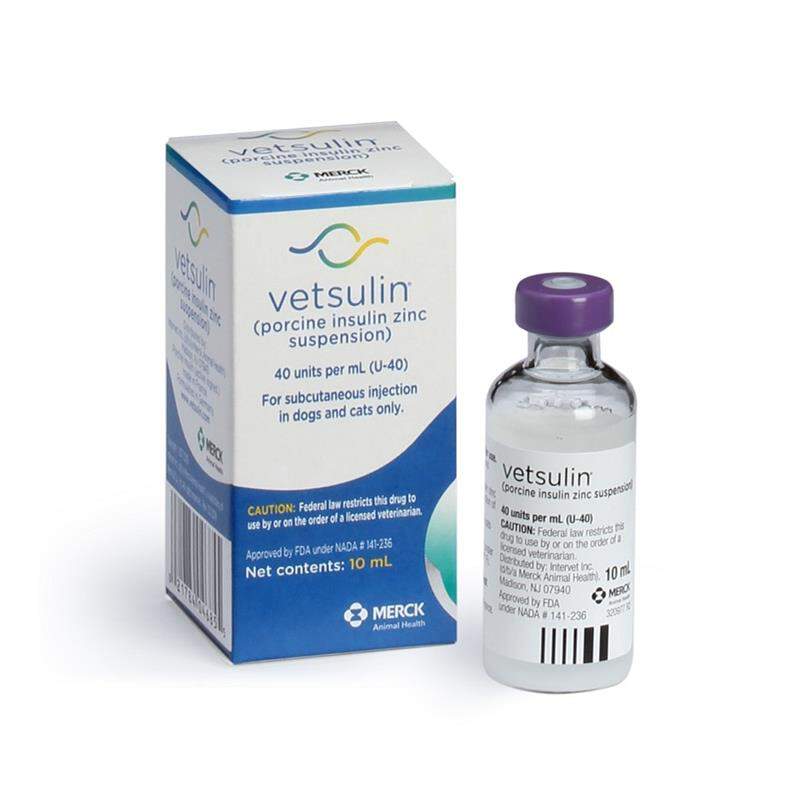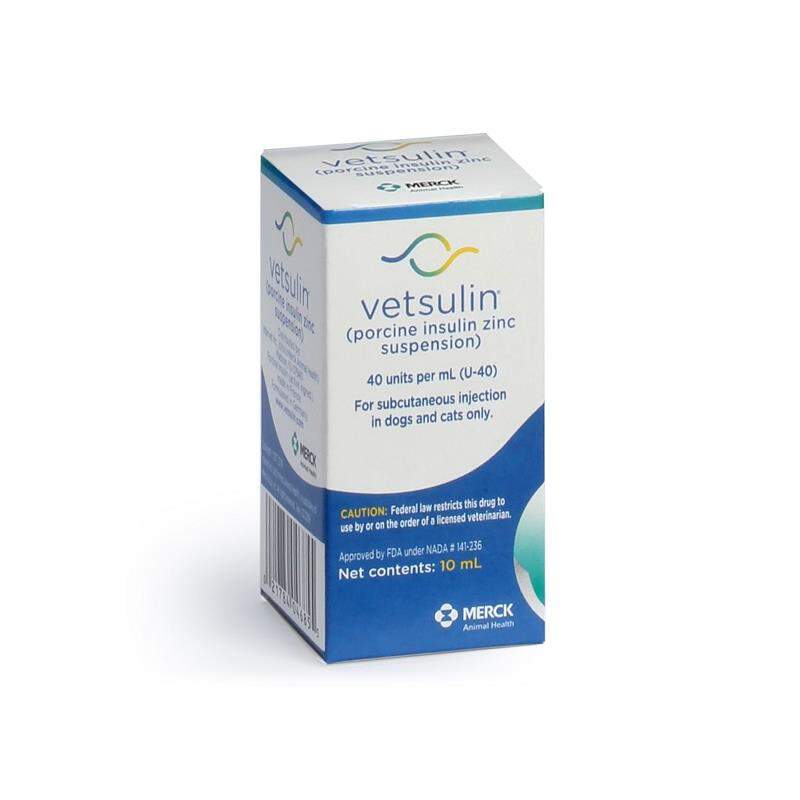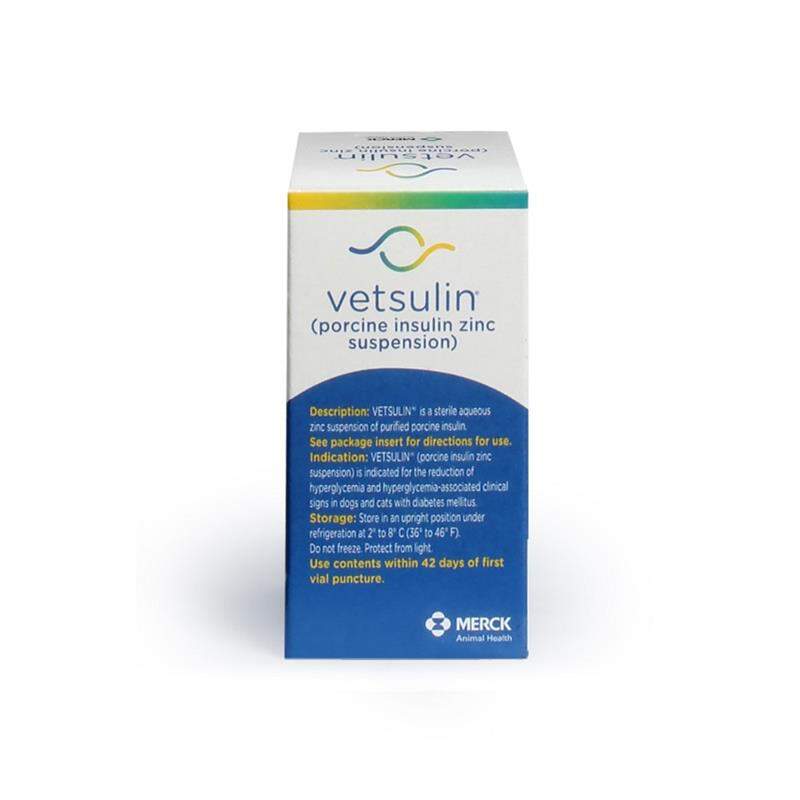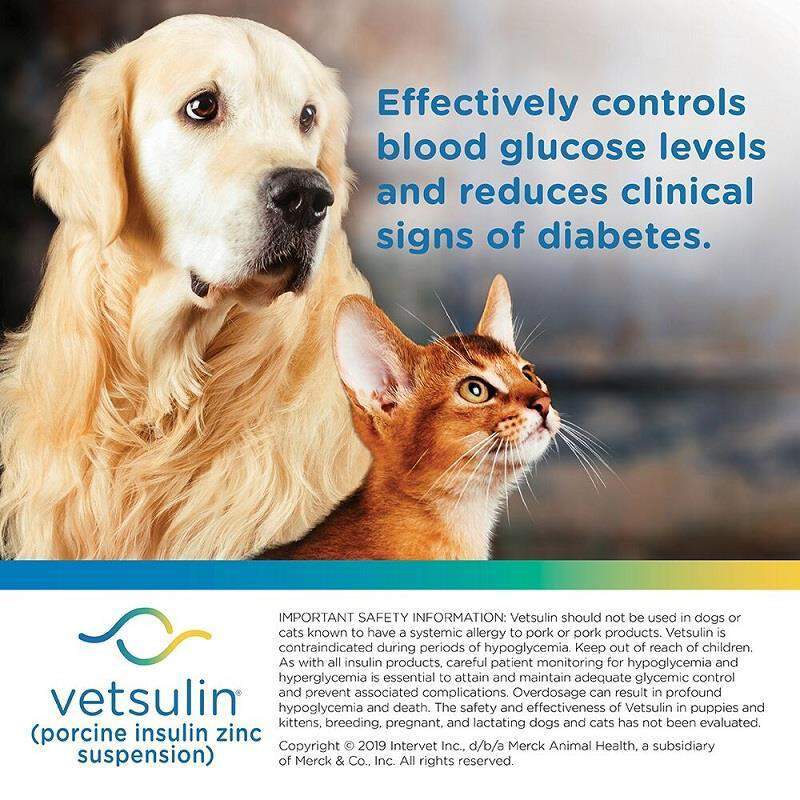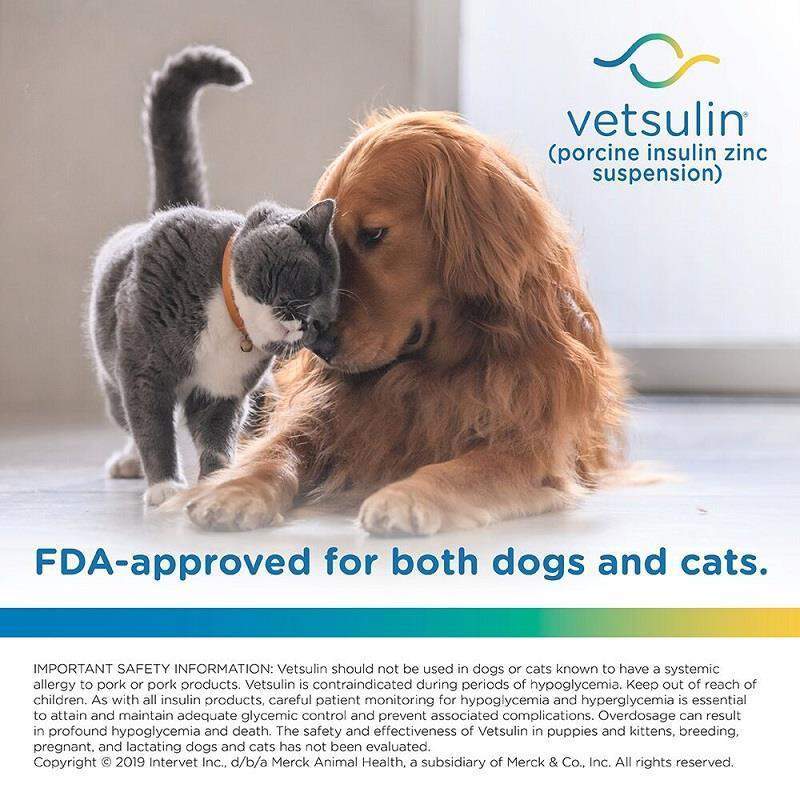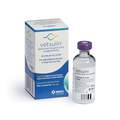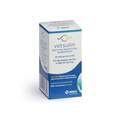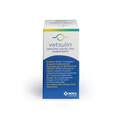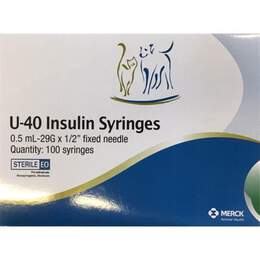Click on image to open expanded view
Item No.
25897
Product Description
Vetsulin is an insulin zinc suspension of porcine origin that diminishes the clinical indications of diabetic mellitus and hyperglycemia in dogs and cats. It is approved by the FDA.
Who is Vetsulin Insulin for Dogs and Cats for?
Dogs and cats.
Why use Vetsulin Insulin for Dogs and Cats?
The only diabetic treatment for pets approved by the FDA is Vetsulin.
How does Vetsulin Insulin for Dogs and Cats work?
Product Features: To effectively treat diabetes symptoms, the required dose, activity duration, and peak activity will all differ between patients. The amino acid structure of porcine insulin is identical to that of canine insulin. It's classified as a medium-acting insulin. In dogs, Vetsulin has two activity peaks: one about 4 hours and the other approximately 11 hours following treatment. The duration of the activity varies, although it is usually 14 to 24 hours. The activity peak in cats is between 1.5 and 8 hours, while the activity duration is between 8 and 12 hours.
Manufacturer:
Merck Animal Health
Active Ingredients(s):
Vetsulin® is a sterile aqueous zinc suspension of purified porcine insulin.
How is Vetsulin Insulin for Dogs and Cats sold?
Vetsulin® is supplied as a sterile injectable suspension in multidose vials containing either 2.5 mL or 10 mL of 40 IU/mL porcine insulin zinc suspension. Vials are supplied in cartons of one 10 mL vial and cartons of ten 2.5 mL vials.
What are the side effects of Vetsulin Insulin for Dogs and Cats?
Notify your vet if your pet exhibits any uncomfortable or uncomfortable side effects. Notify your vet at once if your pet has any signs of an adverse reaction or medical condition. Hypoglycemia signs include coma, seizures, staggering gait (incoordination), and lethargy. Hypoglycemia is the most frequently-reported side effect of insulin use. Severe reactions may happen suddenly. In rare cases, an allergic response could occur. Pursue emergency treatment if your pet has symptoms of such a reaction, including swollen face, swollen tongue, swollen lips, hives, or trouble breathing.
What special precautions are there?
Only give Vetsulin to dogs and cats subcutaneously. Improper dosing is possible when incorrect syringes are used. Use only Intervet U-40 Insulin Syringes. Patients being treated with insulin should be closely monitored for hypoglycemia or hyperglycemia. This step is essential to prevent complications and maintain and attain proper glycemic control. Supportive therapy and short-acting insulin treatment are needed to stabilize animals who have: Ketoacidosis Lethargy Vomiting Anorexia
What to do if overdose?
Contact your nearest emergency vet or animal clinic. Certain glucocorticoids, endocrinopathies and rogestogens can have a dangerous effect on insulin activity. Overdose can result in hypoglycemia and death.
How can I store Vetsulin Insulin for Dogs and Cats?
Temperatures should be kept between 36° and 46°F (2° and 8°C). Never freeze; keep this product refrigerated. Protect from light.
Helpful Tips:
Review the prescription's directions carefully prior to using this medication.
Overview
Prior to extracting the dose from the vial, gently roll the vial to mix the product. The injection should be given subcutaneously, 2 to 5 cm (3/4 to 2 in) from the dorsal midline, alternating sides and varied from behind the scapulae to the mid-lumbar region with a U-40 insulin syringe. Vetsulin is a veterinary medicine that is used to treat cats. For cats, the suggested first dose of Vetsulin is 1 to 2 IU per injection. The injections should be given twice a day, at around 12-hour intervals. The injections should be administered concurrently with, or shortly after, each meal for cats fed twice daily. There is no need to adjust the feeding schedule for cats who are fed ad libitum. At regular intervals, your veterinarian should reassess your cat and alter the dose depending on clinical symptoms, urine findings, and blood glucose curve readings until sufficient glycemic control is achieved. If the cat's food, body weight, or concomitant medicine changes, or if the cat develops a concurrent infection, inflammation, neoplasia, or another endocrine or medical issue, extra dose adjustments may be required. Canine Vetsulin For dogs, the starting dose of Vetsulin is 0.5 IU insulin/kg body weight. This dose should be taken once a day, either before or after a meal. At regular intervals, your veterinarian should re-evaluate your dog and alter the dose based on clinical signs, urine results, and glucose curve values until sufficient glycemic control is achieved. Glycemic control was considered adequate in the US clinical study if an acceptable blood glucose curve (reduction in hyperglycemia and a nadir of 60-160 mg/dL) was achieved, clinical signs of hyperglycemia (polyuria, polydipsia, and ketonuria) were improved, and hypoglycemia (blood glucose 50 mg/dL) was avoided. If the duration of insulin action is found to be insufficient, twice-daily medication should be started. If twice-daily therapy is started, the two doses should be 25% lower than the once-daily amount necessary to achieve a satisfactory nadir. If a dog getting 20 units of Vetsulin once day has a good nadir but insufficient activity duration, the Vetsulin dose should be increased to 15 units twice daily. If the dog's food, body weight, or concomitant medicine changes, or if the dog develops a concurrent infection, inflammation, neoplasia, or another endocrine or medical problem, extra dose adjustments may be required.
Main Ingredients
Each mL contains: 40 IU of purified porcine insulin (30% amorphous and 70% crystalline) Zinc (as chloride): 0.08 mg Sodium acetate trihydrate: 1.36 mg Sodium chloride:7.0 mg Methylparaben (preservative): 1.0 mg pH is adjusted with hydrochloric acid and/or sodium hydroxide.



